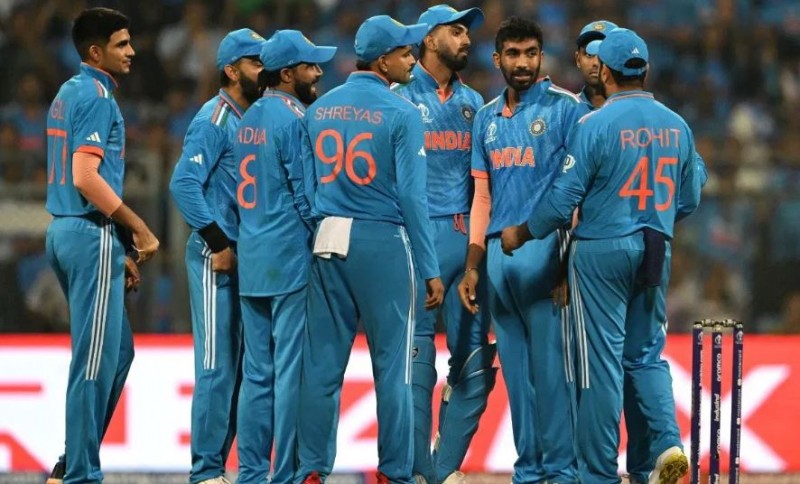
The Indian team continued its excellent performance in the league stage of the World Cup 2023, winning all 9 matches. In its last league match, Team India has defeated Netherlands by 160 runs in Bengaluru. Team India won every match of the tournament easily and has made it to the semi-finals. Now the wait is for the semi-finals, where Team India is going to face New Zealand. The same New Zealand, which had eliminated Team India in the semi-finals in the last World Cup. This time too the Kiwis are a big threat for Team India and one of the reasons for this is the Wankhede Stadium in Mumbai.
The first semi-final of the tournament is to be played at Wankhede Stadium on Wednesday 15th November. Team India had won the World Cup title on this very ground 12 years ago. This time this ground is going to be an important step towards the title. In the current tournament, India also played a match at Wankhede, in which it defeated 2011 runner-up Sri Lanka for just 55 runs and won by 302 runs. Looking at that performance and current form, Team India is a strong contender but it is not easy at all.
Win the toss, bat first: Actually the result of the match at Wankhede Stadium is also going to depend on who wins the toss and what he does first. In the matches of World Cup 2023, there is evidence that on this ground, the team which has won the toss and decided to bat first, has been in advantage. The one who chose fielding first had to face defeat only. Only 4 matches were played in Wankhede before the semi-finals. In these four matches, the teams batting first scored big scores. The only exception was the Afghanistan-Australia match, where Afghanistan won the toss and chose to bat but lost and everyone knows the reason for that - Glenn Maxwell's astonishing double century.
That's why batting first is important: Let us tell you why it is important to bat first in Wankhede. In fact, the new ball always helps the fast bowlers at Wankhede. It is very high in the initial overs, but even after batting first during the day, the situation becomes easier after 5-6 overs. This assistance lasts longer in the second innings and the pacers continue to pose a threat to the batsmen with the help of swing and seam as there is a light breeze in the evening.
The statistics of this tournament also confirm this. It was always difficult to bat in the second innings on this ground. Especially in the first powerplay (1-10 overs), batting has looked no less than a disaster. In the 4 matches played here, a total of 17 wickets fell in the first powerplay, most of which went to the pacers. Whereas if this limit is increased to 12 overs then the figure becomes 20 wickets. Obviously, Team India's batsmen are in good form but it is going to be very difficult to deal with swing bowlers like Trent Boult and Tim Southee in the second innings.
Congress Threatens Transformation of Scindia's Palace in MP Elections: Raj Babbar's Bold Proposal
Supreme Court Hearing on Delhi Pollution: Relief After Rain; Court Criticizes Government's Approach